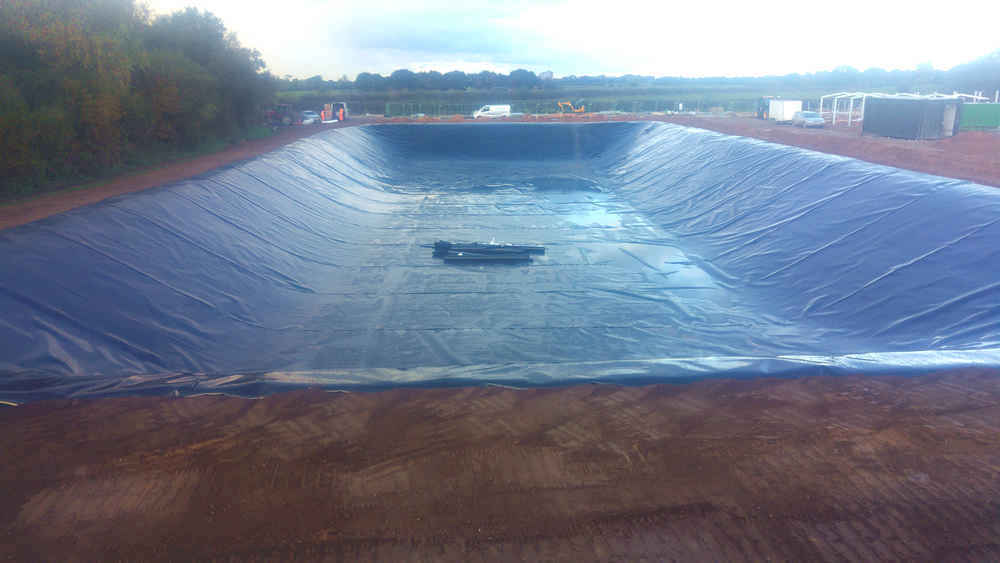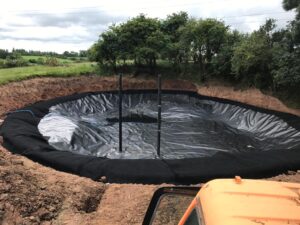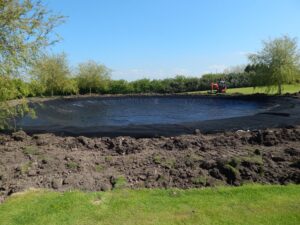Water scarcity and the need for efficient water management have become increasingly critical worldwide. In agricultural sectors particularly, the utilization of water irrigation reservoirs and lagoons plays a pivotal role in maintaining crop productivity. However, ensuring their structural integrity, preventing seepage, and conserving water resources remain ongoing challenges. Enter geosynthetic lining—a revolutionary solution revolutionizing water containment systems.
Understanding Geosynthetic Lining
Geosynthetic lining involves the application of synthetic materials like geomembranes and geotextiles to create impermeable barriers. These linings serve as protective layers against seepage, erosion, and contamination in reservoirs and lagoons, effectively preserving water quality and quantity.
Benefits Galore
1. Seepage Prevention:
Geosynthetic liners act as impermeable barriers, preventing water leakage and seepage. This reduces water loss and maintains the reservoir’s intended water volume, ensuring consistent irrigation supply for crops.
2. Durability:
Engineered to withstand various environmental conditions, geosynthetic liners offer exceptional durability. They resist punctures, UV degradation, and chemical reactions, ensuring a longer lifespan for the reservoirs and lagoons.
3. Environmental Conservation:
By mitigating seepage, geosynthetic liners prevent soil contamination and groundwater pollution. This eco-friendly approach safeguards the surrounding environment and natural resources.
4. Cost-Efficiency:
The initial investment in geosynthetic lining proves cost-effective in the long run. Reduced maintenance, lower water loss, and extended lifespan of reservoirs translate into substantial savings over traditional construction and maintenance methods.
5. Rapid Installation:
Compared to conventional construction, geosynthetic lining installation is quicker and more efficient. This leads to minimized downtime, enabling faster operational readiness of the irrigation system.
Applications in Agriculture
1. Crop Yield Enhancement:
Maintaining consistent water supply through lined reservoirs optimizes irrigation scheduling, promoting healthy crop growth and maximizing yields.
2. Water Conservation:
Geosynthetic lining aids in efficient water storage and conservation. It allows for better management of seasonal variations in water availability, reducing reliance on natural water sources.
3. Sustainable Farming Practices:
Adopting geosynthetic lining aligns with sustainable agricultural practices by minimizing water wastage, preserving soil health, and supporting long-term farming viability.
Conclusion
Geosynthetic lining presents a transformative solution for enhancing water irrigation reservoirs and lagoons. Its multifaceted benefits—seepage prevention, durability, environmental conservation, cost-efficiency, and rapid installation—make it an indispensable tool in modern water management practices.
For agriculture, the integration of geosynthetic lining translates into improved crop yields, optimal water conservation, and the promotion of sustainable farming techniques. As the world grapples with water scarcity and environmental concerns, embracing such innovative technologies becomes imperative for a resilient and sustainable future.
Geosynthetic lining not only safeguards our water resources but also fosters a more efficient, productive, and eco-conscious approach to agricultural irrigation—a step forward in ensuring food security and environmental sustainability for generations to come.





